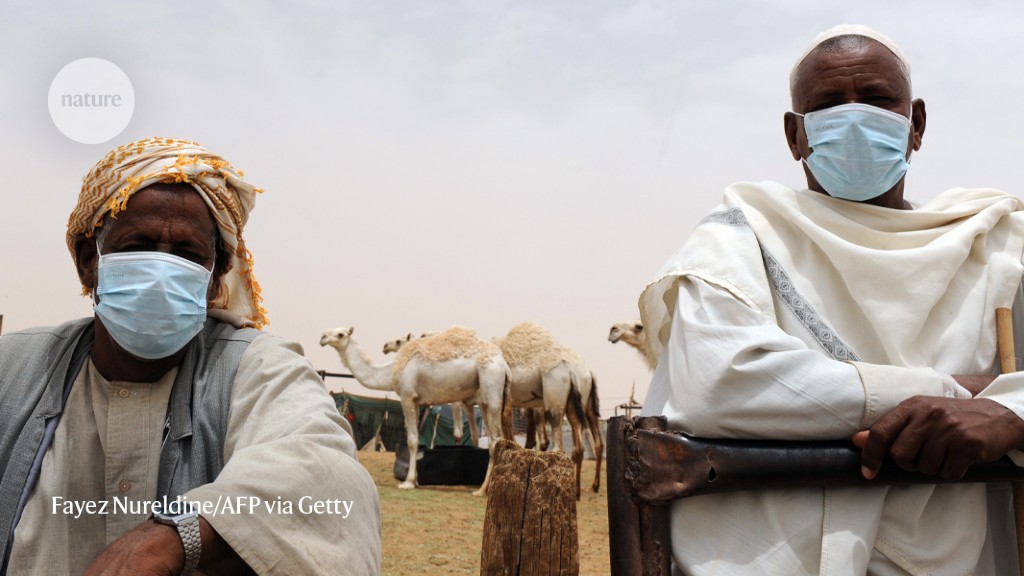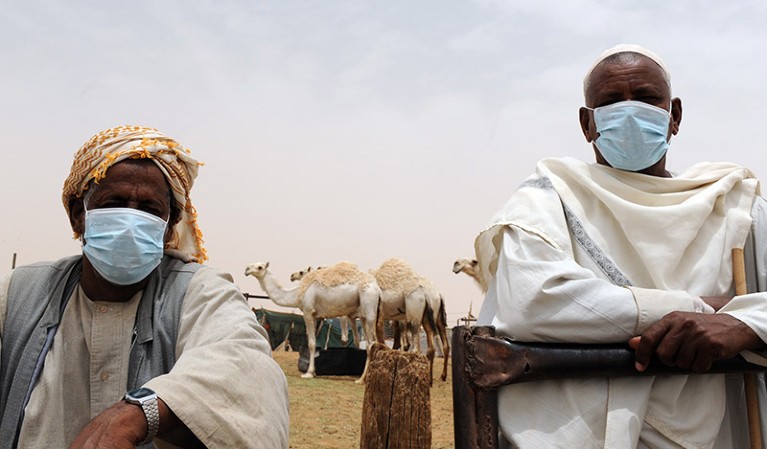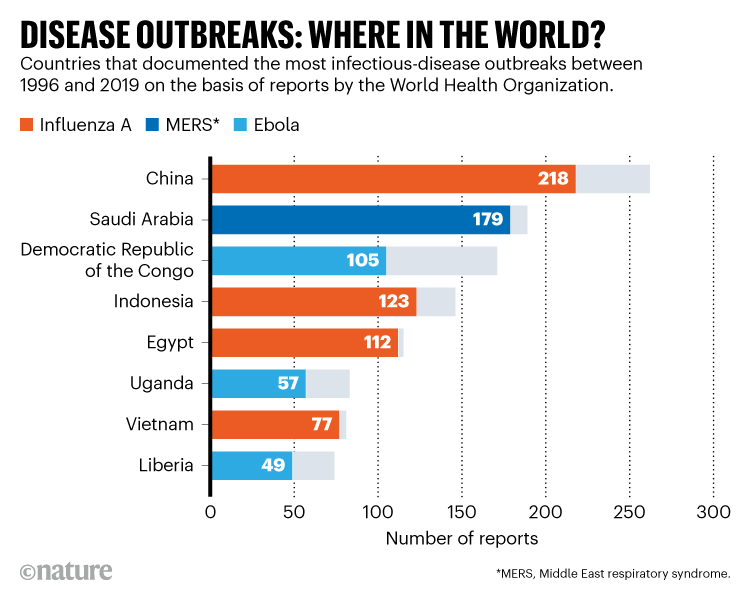Middle East respiratory syndrome, thought to be transmitted by camels, was a commonly reported infectious disease between 1996 and 2019.Credit: Fayez Nureldine/AFP via Getty
Globally, influenza has been responsible for more outbreaks than any other infectious disease over the past 23 years, followed by Middle East respiratory syndrome (MERS) and Ebola, finds an analysis of disease reports by the World Health Organization (WHO)1. The study also reveals the subjective way in which disease outbreaks are often reported, suggesting that this can affect how resources are allocated.
Public-health authorities use several data sources to track infectious-disease outbreaks, but the WHO’s Disease Outbreak News (DON) is one of the most influential. Global-health researcher Rebecca Katz at Georgetown University in Washington DC and her colleagues collected all 2,789 DON reports issued between 1996 and 2019 in a searchable database. The database includes the metadata pulled from each report, such as the location of the outbreak, type of disease and timeframe over which it progressed.
The researchers found that in most years, influenza, especially the H5N1 variant, was reported at the highest frequency of any infectious disease — 776 outbreaks have been documented since 1996.
China reported the most outbreaks — 262 in total, of which 218 were of influenza — followed by Saudi Arabia, which documented MERS 179 times, and the Democratic Republic of the Congo, which reported 105 Ebola outbreaks (See ‘Disease outbreaks’). Few reports were associated with countries in Eastern Europe.
Katz says that the diversity in reporting patterns results from the disparate surveillance capacities of various countries, along with the diseases that national health authorities prioritize and, ultimately, what the WHO decides to concern itself with. “There are a lot of humans involved here, and humans are making different calls,” she says. For instance, Ebola is reported much more often than other haemorrhagic fevers that periodically erupt in Africa.
Other variations can be explained by the quality of country’s health systems. For example, Egypt has reported 115 outbreaks — mostly of influenza — in the 23-year time span that Katz’s team analysed. But no outbreaks have ever been reported by nearby Libya, which has an underfunded and unstable health system as a result of two civil wars during that period. Timothy Brewer, an infectious-disease researcher at the University of California, Los Angeles, says the analysis also shows that the WHO cannot track all outbreaks around the world, and so must pick and choose.
Transparent reporting systems
The team’s searchable database could be a useful tool in providing verified information about large outbreaks and documenting the history of infectious diseases, says Mark Smolinski, president of the non-profit organization Ending Pandemics in San Francisco, California. Having transparent, complementary outbreak-reporting systems is an important goal, he adds. “The faster we find out there’s a real threat anywhere around the world and make that information available, the better off we all are.”
The database will allow researchers to look at the factors that determine how much money is spent to suppress a specific outbreak, or how external circumstances such as conflicts or weather events affect them, says Katz. However, the study notes that DON reports do not mention all known outbreaks in every region.
Katz says the WHO could improve the DON reports by increasing transparency around how it prioritizes the thousands of notifications it receives, creating more-specific criteria for an outbreak’s inclusion, and adding information about contextual factors such as climate hazards or outbreaks in animal populations.
A spokesperson for the WHO said it is drafting a publication detailing its decision-making process and criteria for DON reports, as well as restructuring its website to make the reports easier to search. The agency adds that it standardized the structure and format of the DON reports in 2021 — after the period that Katz’s study analysed. “WHO is a learning organization, and this extends to the DON,” the WHO wrote in a statement.









More News
Author Correction: Stepwise activation of a metabotropic glutamate receptor – Nature
Changing rainforest to plantations shifts tropical food webs
Streamlined skull helps foxes take a nosedive